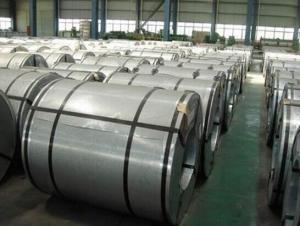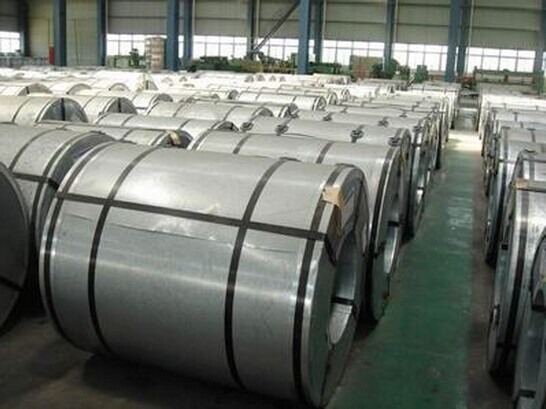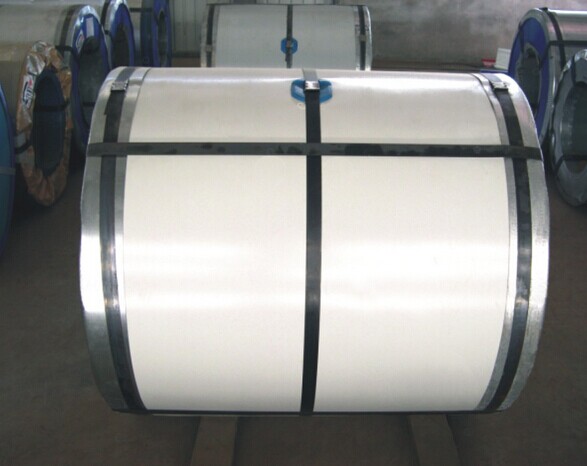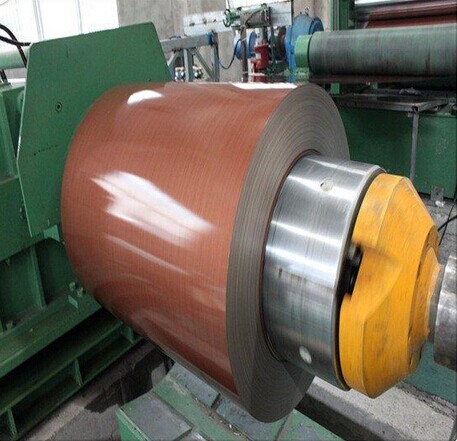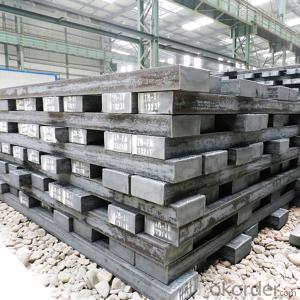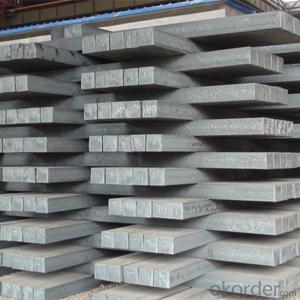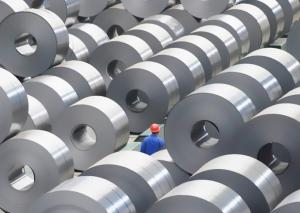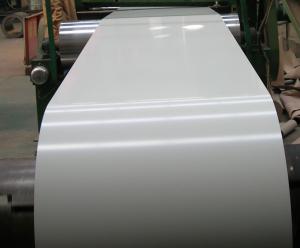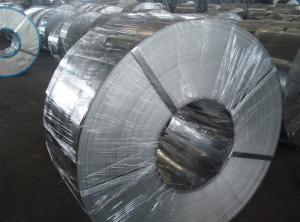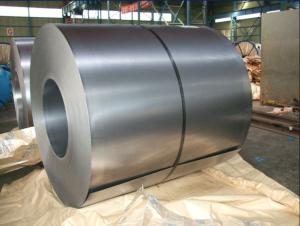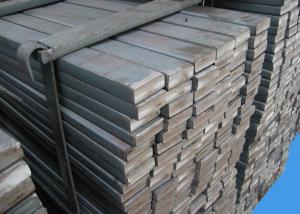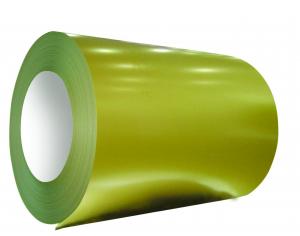PPGI Wood Printed Pattern PPGI In Chinese Shandong
- Loading Port:
- Tianjin
- Payment Terms:
- TT or LC
- Min Order Qty:
- 1 m.t.
- Supply Capability:
- 22 m.t./month
OKorder Service Pledge
OKorder Financial Service
You Might Also Like
1.Structure of Prepainted Galvanized steel Coil :
With Gi as base metal,after pretreatmet (degrease and chemical treatment) and liquid dope with several Layers of color,then after firing and cooling,finally the plate steel is called pre-painted galvanized steel ( PPGI) .Pre-painted galvanized steel is good capable of decoration ,molding,corrosion resistance
2.Main Features of Prepainted Galvanized steel Coil:
• Excellent process capability
• Smooth and flat surface
• Workability, durability
• Excellent heat resistance performance
• High strength
• Good formability
• Good visual effect
3.Prepainted Galvanized steel Coil Images
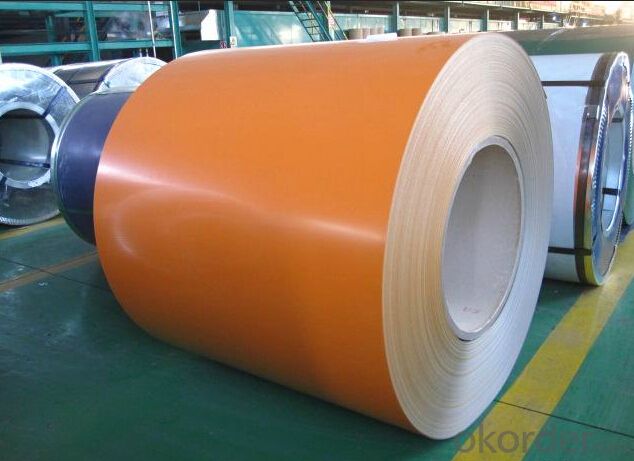
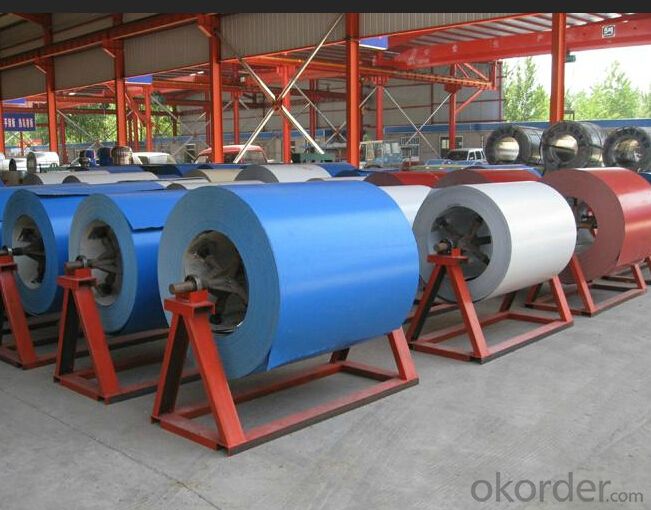
4.Prepainted Galvanized steel Coil Specification
Standard:ASTM, GB,JIS,JIS G3302 ASTM 755 EN10169
Grade: DX51D CGCC CS
Thickness: 0.13mm~3.0mm,
Width: 1250,600-1250mm
Coil weight:3-12 MT
Coil ID:508/610mm
Chemical composition:
C | Si | Mn | Cr | Ni | P | S |
0.150 | 0.476 | 11.231 | 12.50 | 0.900 | 0.039 | 0.010
|
5.FAQ of Prepainted Galvanized steel Coi
We have organized several common questions for our clients,may help you sincerely:
1.How do you control your quality
We have established the international advanced quality management system,every link from raw material to final product we have strict quality test;We resolutely put an end to unqualified products flowing into the market. At the same time, we will provide necessary follow-up service assurance.
2.how long we will receive the goods ?
After receiving your deposit or workable lc ,our normal shipment date is 15-20days,and it takes around 28 days to reach your port of destination. But is up to different destination
3. what is your moq
Normally our moq is 25per size ,but it is up to different size
- Q: What are the different methods of testing the quality of steel products?
- There are several methods of testing the quality of steel products, including destructive and non-destructive testing methods. Destructive testing involves subjecting the steel to extreme conditions, such as tension, compression, or bending, to determine its mechanical properties and strength. Non-destructive testing methods include visual inspection, ultrasonic testing, magnetic particle testing, and radiographic testing, which allow for the detection of defects or irregularities in the steel without causing any damage. These testing methods help ensure that steel products meet the required quality standards and are fit for their intended applications.
- Q: What are the applications of steel forgings in the aerospace industry?
- Steel forgings are widely used in the aerospace industry due to their exceptional strength, durability, and resistance to extreme conditions. They are commonly employed in critical components such as turbine disks, landing gear, wing fittings, and engine shafts. The superior mechanical properties of steel forgings ensure optimal performance, reliability, and safety in aircraft, making them vital for the aerospace sector.
- Q: How is steel used in the production of industrial valves?
- Steel is commonly used in the production of industrial valves due to its durability, strength, and resistance to corrosion. It is used to manufacture valve bodies, stems, and other critical components, ensuring reliability and longevity in various industrial applications.
- Q: What are the advantages of using steel in the manufacturing of solar panels?
- There are several advantages of using steel in the manufacturing of solar panels. Firstly, steel is a strong and durable material, providing excellent structural support and protection to the delicate solar cells. It can withstand harsh weather conditions, extreme temperatures, and resist corrosion, ensuring the longevity of the solar panels. Additionally, steel is a widely available and cost-effective material, making it an ideal choice for large-scale production of solar panels. It is also highly recyclable, promoting sustainability and reducing environmental impact. Overall, steel enhances the efficiency, reliability, and affordability of solar panels, making them a viable and sustainable energy solution.
- Q: How are steel pipes used in the transportation of chemicals?
- Steel pipes are commonly used in the transportation of chemicals due to their high strength and durability. They are designed to withstand the corrosive nature of many chemicals and can safely transport them over long distances. The smooth interior surface of steel pipes also helps to minimize friction and maintain the purity of the chemicals being transported. Additionally, steel pipes can be easily connected and installed, making them a reliable choice for the transportation of chemicals in various industries.
- Q: What is the role of steel in earthquake-resistant building design?
- The role of steel in earthquake-resistant building design is crucial as it provides strength, flexibility, and ductility to withstand and absorb the energy generated during an earthquake. Steel is used to reinforce concrete structures, such as beams, columns, and foundations, enhancing their ability to resist seismic forces. Additionally, steel frames and braces are often employed to create a more resilient and stable building system that can better withstand the lateral forces exerted by earthquakes.
- Q: What are the different types of heat treatments for steel?
- There are several different types of heat treatments for steel, including annealing, normalizing, quenching, tempering, and case hardening. Annealing involves heating the steel to a specific temperature and then slowly cooling it to relieve internal stresses and improve its ductility. Normalizing is similar to annealing, but the steel is cooled in still air instead of a controlled environment. Quenching involves rapidly cooling the steel to increase its hardness, while tempering is a subsequent heat treatment that reduces the brittleness caused by quenching. Case hardening is a process where only the outer surface of the steel is hardened, making it more wear-resistant while maintaining a tough core.
- Q: How are steel products used in the food processing industry?
- Steel products are used extensively in the food processing industry due to their durability, corrosion resistance, and ease of cleaning. They are used to manufacture various equipment and machinery, such as storage tanks, conveyors, cutting and slicing tools, and food processing lines. Steel products ensure food safety by preventing contamination and maintaining hygiene standards, making them indispensable in the food processing industry.
- Q: What are the uses of steel wire mesh in filtration?
- Steel wire mesh is commonly used in filtration due to its durability and ability to withstand high pressure and temperature conditions. It is used to separate solids from liquids or gases in various industries such as oil and gas, water treatment, food processing, and pharmaceuticals. The mesh provides a strong and reliable barrier, allowing for efficient filtration and removal of impurities, particles, or contaminants. Additionally, steel wire mesh can be easily cleaned and maintained, making it a cost-effective and practical choice for filtration applications.
- Q: How is steel used in the construction of amusement parks and entertainment venues?
- Steel is commonly used in the construction of amusement parks and entertainment venues due to its strength, durability, and versatility. It is used to build roller coasters, ferris wheels, ride structures, and various other attractions. Steel provides the necessary support to ensure the safety and stability of these structures, allowing for thrilling and enjoyable experiences for visitors.
Send your message to us
PPGI Wood Printed Pattern PPGI In Chinese Shandong
- Loading Port:
- Tianjin
- Payment Terms:
- TT or LC
- Min Order Qty:
- 1 m.t.
- Supply Capability:
- 22 m.t./month
OKorder Service Pledge
OKorder Financial Service
Similar products
Hot products
Hot Searches
Related keywords
